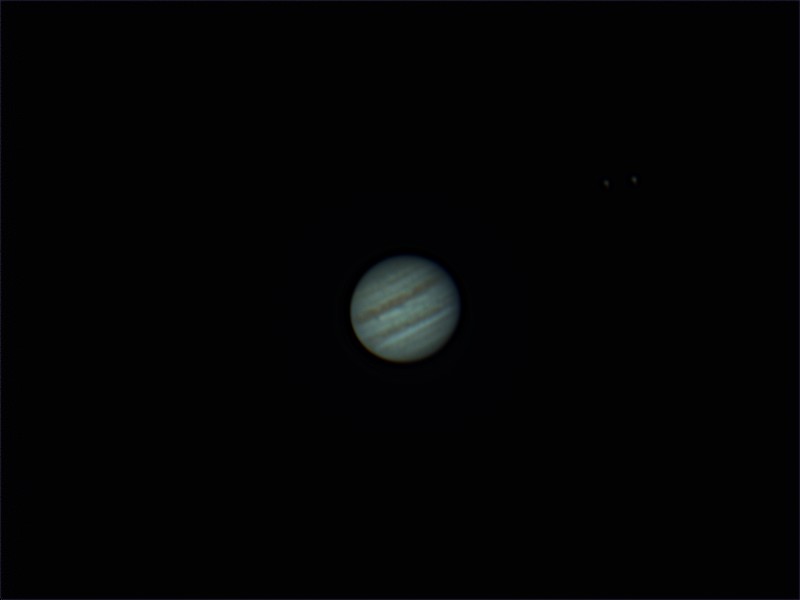On March 20, 2025, at 9:00 PM PDT in Torrance, California, Jupiter was prominently visible in the southwestern sky, situated in the constellation Taurus. The planet’s four largest moons—Io, Europa, Ganymede, and Callisto—were observable through a Celestron C11 f/10 telescope.

🌙 Moon Phase and Sky Conditions
At that time, the Moon was in a waning gibbous phase, approximately 72% illuminated. It rose after sunset and was visible in the eastern sky, providing moderate illumination that could slightly affect deep-sky observations but still allowed for clear views of bright objects like Jupiter and its moons. The Nine Planets
🔭 Observing Jupiter and Its Moons
The Galilean moons orbit Jupiter in a relatively straight line along its equatorial plane. Their positions change noticeably over the course of a few hours due to their rapid orbits. On this particular evening, their arrangement would have been as follows (from west to east):
- Callisto: Farthest west of Jupiter
- Ganymede: Closer to Jupiter on the western side
- Io: Just east of Jupiter
- Europa: Farther east of Jupiterblissphotographics.com
*Note: The exact positions can vary based on the time and the observer’s location. For precise real-time positions, you can use tools like TheSkyLive’s Galilean Moons Tracker.
🔭 Tips for Observing
- Telescope Orientation: Depending on your telescope’s optics, the view might be inverted or mirrored. For instance, Newtonian reflectors invert the image vertically, while refractors with a diagonal may mirror it horizontally.
- Optimal Viewing: To minimize the Moon’s glare, try observing Jupiter when it’s higher in the sky and the Moon is lower on the horizon.
- Recording Observations: Sketching the positions of the moons at different times can be a fun way to track their orbits and understand their motion around Jupiter.